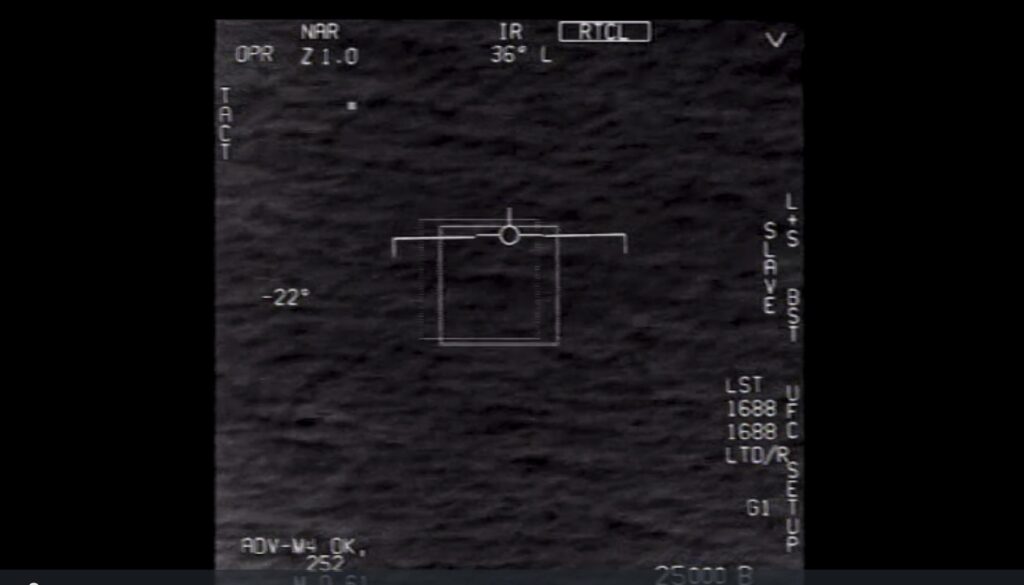Debates are erupting online after NASA’s UAP panel appeared to debunk two major UFO videos. NASA’s UFO task force met for a public UAP panel on Wednesday, May 31. The four-hour meeting discussed everything from data collection techniques to exactly what role NASA’s task force might play alongside AARO. But two of the most hotly debated revelations happened about halfway through the meeting. One of the panel experts, Dr. Sean Kirkpatrick of AARO, revealed that a video showing a UAP traveling from the sky into the ocean was actually just a sensor glitch. And another expert debunked the Pentagon’s “Go Fast” UAP video that had previously gone viral.
AARO Expert Says Sensor Glitch Made a UFO Look Like It Entered the Water
NASA’s independent UAP group, composed of 16 people, was formed in June 2022, Space.com reported. This meeting was informing the public about where the group is at currently and its future plans. An interesting point came up when Kirkpatrick, Director of AARO, was speaking.
He briefly noted that a UFO that was originally reported to have gone into the water actually did not. At the time, the video opened the door to discussions about transmedium UAPs that could travel from water into space. But Kirkpatrick indicated this wasn’t actually the case.
https://twitter.com/PostApocalypt/status/1663932731237990401
The leaked video, taken off the coast of San Diego, was widely reported on in May 2021. The Hill reported that it was from the U.S. Navy and was obtained by Jeremy Corbell, having originally been filmed in July 2019 off the USS Omaha. The video shows a sphere-shaped UFO flying over the water and appearing to splash and enter the ocean. The Department of Defense confirmed with NBC that hte video was real and being reviewed by the Pentagon’s UAP task force.
The US Navy photographed & filmed “spherical” shaped UFOs & advanced transmedium vehicles; here is some of that footage. Filmed in the Combat Information Center of the USS Omaha / July 15th 2019 / warning area off San Diego @ 11pm PST. No wreckage found. No craft were recovered. pic.twitter.com/tK1YTG8sJ7
— Jeremy Kenyon Lockyer Corbell (@JeremyCorbell) May 14, 2021
However, during the May 31 meeting, Kirkpatrick briefly mentioned a video showing a UAP going into the water, and said that never actually happened. Instead, he said it was a sensor anomaly.
AARO guy saying no space or maritime reports. Most sightings are orb round spheres. #UAP #NASA pic.twitter.com/Ndotpj67fA
— Post Apocalyptic (@PostApocalypt) May 31, 2023
In fact, he said that AARO had received no space or maritime reports. That doesn’t mean there weren’t any interesting reports. In fact, about 2 to 5% of the 800 reported sightings remain anomalous. And most of the sightings are still round, spherical orbs.
“Those numbers … change weekly…” Kirkpatrick clarified in an audio-only meeting held with the media after the public panel. “My hope is that as we build out our website, those statistics will be [updated] in real time…”
What’s interesting is that in spite of being told that there are no sightings of water-based phenomenon, the UAP acronym has been changed from Unidentified Aerial Phenomenon to Unidentified Anomalous Phenomenon, in order to encompass space, the atmosphere, and water. This name change was a big subject of discussion during the panel.
However, this question of oceanic findings resurfaced later during the meeting.
Are we studying the ocean? Nothing reported below ocean surface #NASAUAP #NASA #UFO #UAP pic.twitter.com/U6pM2CRCiP
— Post Apocalyptic (@PostApocalypt) May 31, 2023
Paula Bontempi said that nothing unusual has been reported to NASA below the ocean surface.
The ‘Go Fast’ UFO Was Just Traveling 40 MPH, an Expert Said, But Not Everyone Is Satisfied with the Explanation
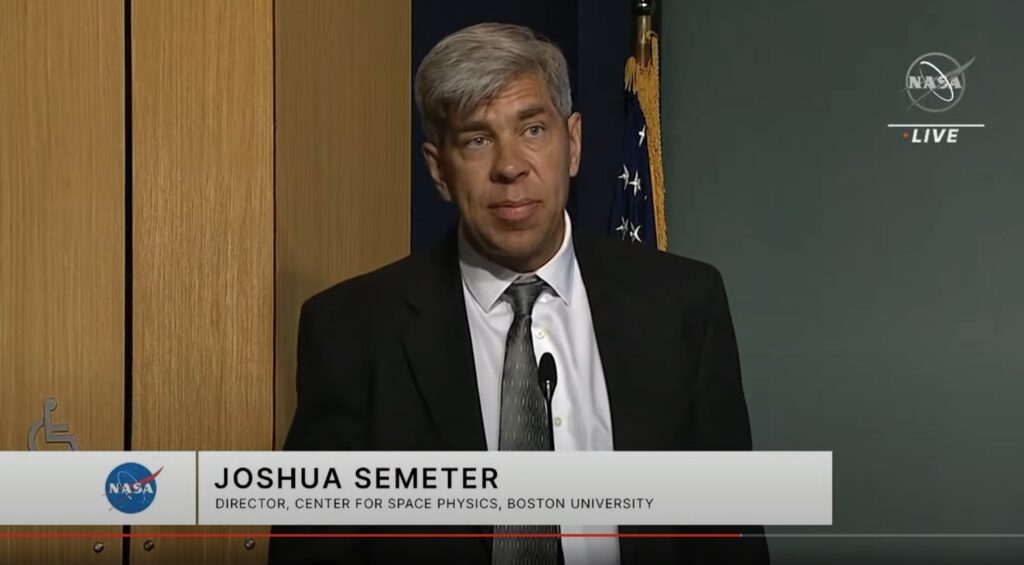
But the water-based UAP wasn’t the only debunked UAP presented during the panel. Joshua Semeter, director of the Center for Space Physics at Boston University, spent time debunking the infamous Go Fast Pentagon video too. However, on Twitter, others aren’t satisfied with the explanation.
Semeter used the data as a way to illustrate how sometimes anomalous findings can later be deciphered if you have the right sensors in play.
The “Go Fast” video was first declassified by the Pentagon in 2020, ABC News reported. This video showed Navy pilots responding to an object off an aircraft carrier. Back in January 2023, ABC News had already reported that officials were saying this was likely an optical illusion.
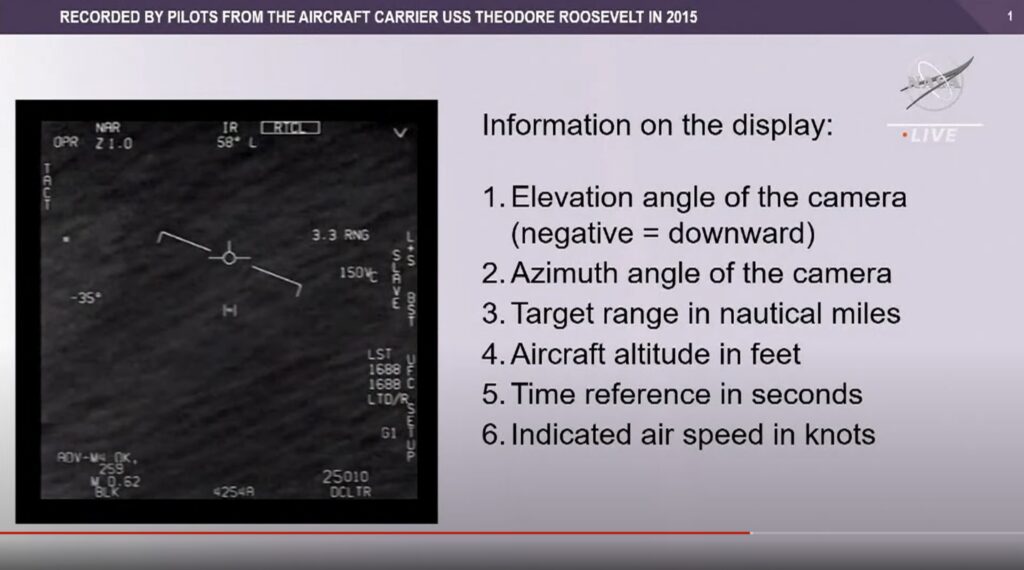
You can watch the video below, via Wikimedia Commons (and released originally by the Pentagon.)
It was one of three Navy videos — “Go Fast,” “Flir1,” and “Gimbal,” a San Diego Union Tribune article reported. Go Fast and Gimbal were caught by an F/A-18 off the Theodore Roosevelt in 2015 in Florida. FLIR1 was the infamous Nimitz video in 2004 off the coast of San Diego.
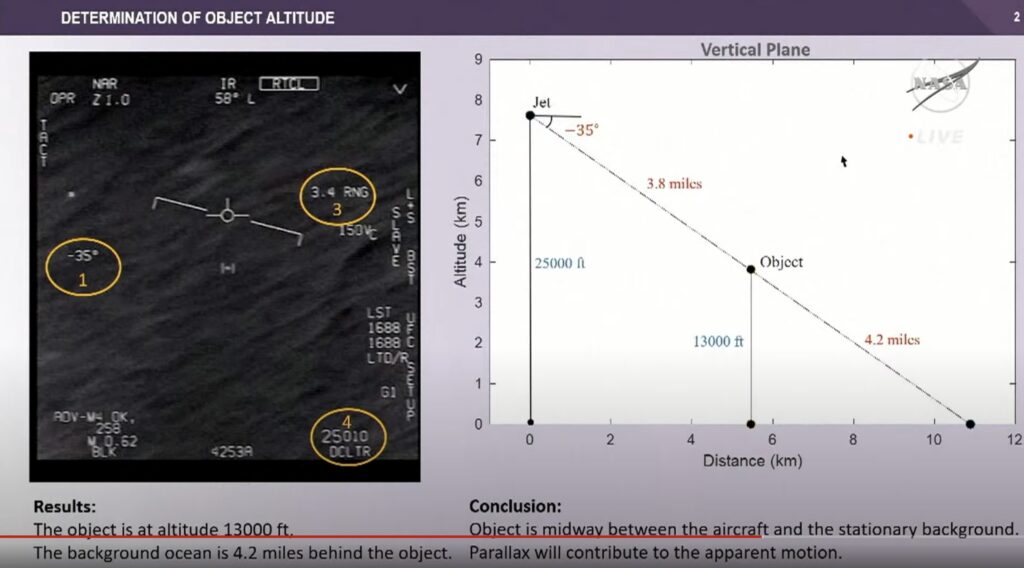
While this wasn’t the first time that the Go Fast video was questioned, it was perhaps the most detailed debunking seen yet.
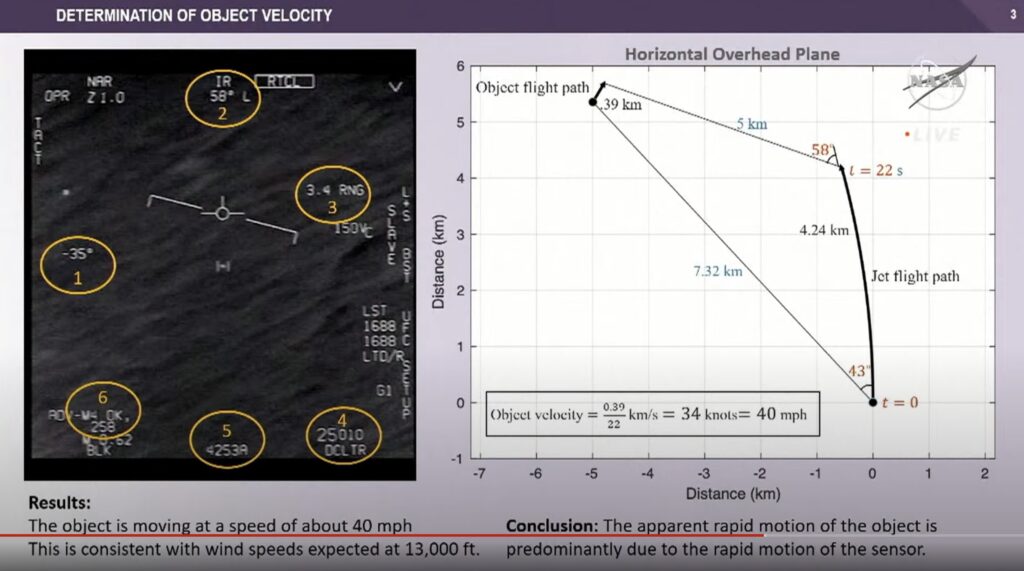
Semeter shared that “basic trigonometry” revealed the object was at 13,000 feet.
Basic trig shows object at 13k feet (explaining why sensor data is so important) #NASAUAP #NASA #UFO #UAP pic.twitter.com/impQdX6GTZ
— Post Apocalyptic (@PostApocalypt) May 31, 2023
He then said sensors revealed the object moved 390 meters in 22 seconds, only about 40 mph. a parallax effect gave a false impression of fast movement.
But on Twitter, quite a few people aren’t satisfied with this explanation.
NASA’s presentation/analysis of the “GoFast” UAP video, unfortunately, is rudimentary and lacks critical context.
The state of analysis (i.e., 3D modeling accounting for wind) is far more sophisticated than what was presented today.@NASA https://t.co/QWZBlCLUfG
— MarikvR (@MvonRen) May 31, 2023
MarikvR of the Hill tweeted that analysis is far more sophisticated than what was presented.
They retweeted a few key points of discussion, including the following:
Today's statement about wind speeds during NASA Briefing on UAP is based on thin air. Like TheCholla explained, he did not take into account wind speed/direction at FL250 where the acft was. This affects the results of the analysis. On top of that, he did not show https://t.co/w2bjlZy66k pic.twitter.com/fTVVRyR6Vn
— Chris SPITZER (@ChrisSPITZER7) May 31, 2023
I'd say simulators like Sitrec (made by @MickWest) are absolutely needed in that case, cause the key factor is reproducing background motion. And so far accouting for this parameter leads to a speed of 100+ Kts.
We need to hear the pilots on this one.
— TheCholla (@the_cholla) May 31, 2023
It would indeed be interesting to hear the pilots’ response to the latest information shared about the Go Fast video.
This work by Stephanie Dwilson is licensed under CC BY-ND 4.0. Please note that this license does not include photos or videos that may be in the story.

